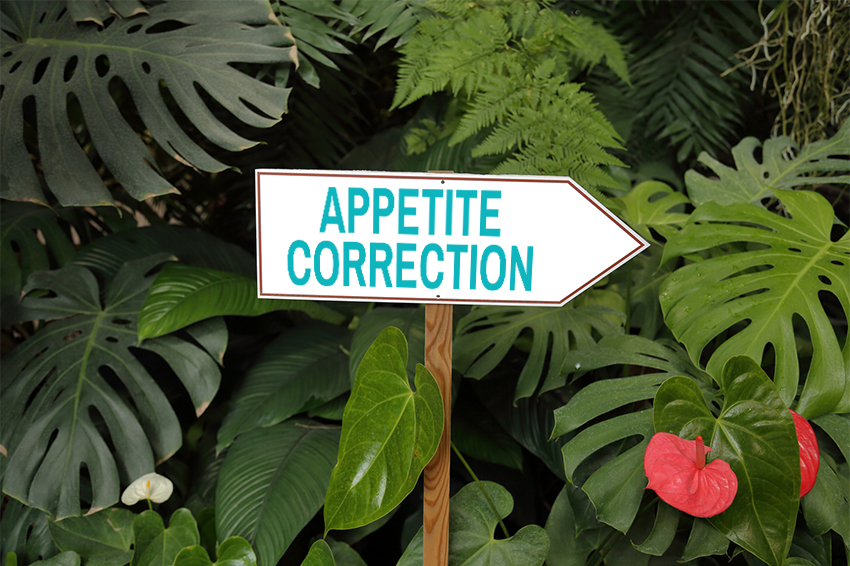Q1: Did you read the AC book?
Yes—Go on to Q2.
No—Read the AC book. It is based on over 20 years of personal experience and thousands of years of user experience with intermittent fasting and will be a big help in getting you on track and setting appropriate expectations.
Q2: Has it been more than three weeks since your first day on a full Fast-5 (5-hour eating window) schedule?
Yes—Go on to Q3.
No—It takes at least three weeks for most people to adapt to the schedule. During the first three weeks, there may be compensatory overeating and weight gain. Maintain your schedule consistently for at least three weeks and then re-evaluate your progress.
Q3: Are you keeping your eating window to five hours or less every day?
Yes—Go on to Q4.
No—Based on our survey results, a window of six or more hours does not work as well as a five-hour window. Aim for a strict five-hour window every day and hang in there for three weeks. You may be surprised at the difference it makes. The goal is appetite correction (AC) and a five-hour window appears to be the sweet spot for most people to achieve AC.
Q4. Have you noticed any loss in size? Are your clothes fitting more loosely?
Yes—If you’re seeing a loss of size, but not pounds, you’re probably on the right track. Give it another couple of weeks and re-evaluate your progress. You’re probably experiencing the “inches before pounds” phenomenon described in the book.
No—Continue to Q5.
Q5: Are you consuming any calories outside your window? This means anything, including milk, cream, butter or oil in your coffee or tea, or any mints, gum or supplement, including fiber supplements.
Yes—Some people make good progress with little bits of calories here and there, but others have to be strict about it, and there’s no way to tell who can and who can’t without trying. Cut all the calories from your fasting period and re-evaluate your progress in three weeks.
No—Continue to Q6.
Q6: Are you taking any medicines (oral or injected) or supplements (even those intended for weight loss)?
Yes—Many medicines have weight gain as a side effect. Some of the most common medications that can cause weight gain are SSRI antidepressants and steroid anti-inflammatory agents. Ask your doctor if you can try a lower dose or stop the medicine for a while. Do not stop a prescribed medication without the prescribing doctor’s approval.
No—Continue to Q7.
Q7: Is your diet carbohydrate-rich?
Yes—Most people can eat as they please on an AC schedule, but some, particularly those starting with a diet high in sugars and processed foods, find that high carbohydrate intake on one day increases the next day’s appetite and hunger. To avoid this, substitute other foods for the Super-BCPs (SPRBCP: sugar, pasta, rice, bread, cereal and potatoes). By the way, donuts, cake and pastries count as “bread,” and icing, frosting and filling counts as sugar, so don’t ruin your chances for real progress by rationalizing technicalities. You don’t have to eliminate them entirely or count calories to a keep under a certain limit; just avoid having them as the main source of calories in any meal for a three-week trial and check your progress at the end of the trial. If, at the end of the trial, you’re seeing progress, then keep it up!
No—continue to Q8.
Q8: Are you under significant or unusual stress?
Yes—As described in the book, the human body’s response to stress is to eat more. In the wild, this very powerful mechanism increases the chances of surviving harsh conditions, but it’s counterproductive to those trying to lose weight. Managing the stress effectively will facilitate fat loss; until that is accomplished, you will be working against your body’s instincts and are unlikely to succeed in the long term.
No—Continue to conclusion.
Conclusion
So you’re doing everything right for your AC schedule, but still not seeing results. That means it’s tweaking time.
Option 1. The most obvious tweak, and the one that’s most likely to work, is to shorten your window by an hour or two. Some AC practitioners didn’t see their best results until they moved to a 1- or 2-hour window—essentially just one meal per day. There’s good news though—when they made that tweak, the full power of AC kicked in and they are able to go through the day with plenty of energy and no bothersome hunger.
Many people ask “how can I get all the nutrients I need in such a short time?” The answer: Easy. What nutrients do you need? You’re no longer growing, so you need fuel for your brain, heart and muscles and only a little bit of protein, because the human body is great at recycling protein. The surplus fat you’re burning provides virtually all of the fuel you need, so you really don’t have to eat much at all. With only one meal to plan, it’s easier to make good choices about what you eat.
Option 2. You can combine your AC schedule with a low-carbohydrate diet for a combined effect that is stronger than either alone. You can read about the first step, which is moderate carbohydrate reduction described as “Super-BCPs” in the AC book. Low-carb diets are well known, as Atkins and more recently known generically as ketogenic or just “keto” regimens. Because you don’t need much protein and high-protein foods tend to be more expensive, replacing the carbohydrates mostly with fat is typical.
Option 3. Your stomach size when empty and its capacity when full have a lot to do with feelings of satiety. One of the ways AC works is by getting stronger satiety signals from your stomach to your brain. With your stomach empty for 19 hours of the day, it can really tell when all of a sudden you’ve put food into it. An obese person’s stomach may have almost twice the capacity (1.7 liters, almost the size of a 2-liter soda bottle) of a lean person’s (1 liter). A tweak that helps augment your stomach’s “full” signal is to avoid large intake all at once. Have your first serving of food, then set a timer for 30 minutes and wait until the timer goes off before eating a second serving. If you have a smartphone, a clock/timer app can be very handy for this. If you’re going to have more servings, set the timer again so you take at least 30 minutes between finishing one serving and starting the next. You can still have as many servings as you want, but give your stomach 30 minutes to work on each serving before starting the next, so it doesn’t get a huge, stomach-stretching filling all at once. This is called timed stepping and may help your stomach shrink so it can send stronger satiety signals to your brain with the filling it gets from your first serving. Like other tweaks, give this a three-week try before deciding whether it’s working for you or not.
Option 4. An AC schedule like Fast-5 is so reliable and effective that when it doesn’t work, it’s a good time to look around and see if something is amiss. One possibility is that calories are sneaking in through some hidden form. The most likely culprit is tea, particularly teas sold in bulk that have no nutritional info on the label. Teas may be sweetened with fruit juice or another calorie-containing agent that’s not obvious on the label. If your tea tastes sweet, this is probably the case. Another thing that may be invisibly interfering with progress is hypothyroidism, which can be ruled out fairly quickly by making a visit to your personal physician and a getting a blood test. Hypothyroidism is relatively rare, but if you can find nothing else that is holding up your progress, it’s worth checking.



9 comments
I was referred to the Fast-5 through it’s reference in Delay Don’t Deny. Gin references you a lot and my husband and I are in the infancy stage of our IF lifestyle. My question is this, after reading the fast -5 is sounds like i can have calorie free items during the fasting window. ie. diet coke, coffee with stevia, lemon and mio in my water. I even found this creamer that says it is void of anything (but artificial stuff i’m sure) no calories, nada. What do you say about the science that states that even the taste of sweet causes insulin release?
I think I found my answers in the FAQs lol. Thanks for putting that together, now if only people would read that first (I am people).
I’m glad you found it. The response to sweet tastes vary from person to person. Many people have lost a lot of weight drinking diet drinks, but it seems to hold others back. So far, there’s no way to tell which way it’s going to work for an individual except putting it to a test (a study of one).
Is it ok to eat from 6am to 11am? I have to have morning coffee with cream.
Yes, you can set your 5-hour window wherever it works best for you. This is #1 on the Fast-5 diet frequently asked questions page, which has more info on this and other questions.
i would like more info on the timed stepping advice. A possible example of a portion of food every 30 mins
The idea isn’t to eat every 30 minutes, but to eat after a fasting period, then when you’ve eaten that portion, wait at least 30 minutes before choosing to eat again by setting a timer and doing something else until it goes off. This gives your body some time to digest and measure what you started with. A good starting portion would be as a 7″ plate with a combination of protein, fat and bulk that’s low in carbohydrate, particularly sugars. Cheese and eggs combine protein & fat. Vegetables such as broccoli, cauliflower, cucumber add bulk with few calories. Pickles and sauerkraut add bulk and tartness with few calories, and some have reported they can help get to that satisfied feeling. Try to avoid making the majority of the food carbohydrate, as is the case with pasta dishes, cereals and the rest of the “SuperBCPs” described in the book–sugar, pasta, rice, bread, cereal and potatoes.
The 3-week adaptation is surprisingly different for different people. Some feel sleepy; some have trouble sleeping. Yet others feel the sleep more soundly and some report more vivid dreams. It goes to show that everyone is a different combination of body, gut bacteria, genes, environment and diet, so everyone is different, and we cannot pretend that one solution will fit everyone. That’s the reasoning behind “the study of one.” Given time, virtually everyone adapts and the human body adjusts in remarkable ways, so chances are very good that this will pass and you’ll soon be feeling great with more energy than before.
I’m on day 13. Love it. My window is from 3-8. My only issue is that I feel fatigued as my 3:00 window approaches. I then eat and feel I need a nap. I’m hoping this is just because I’m still in the initial 3 week phase.